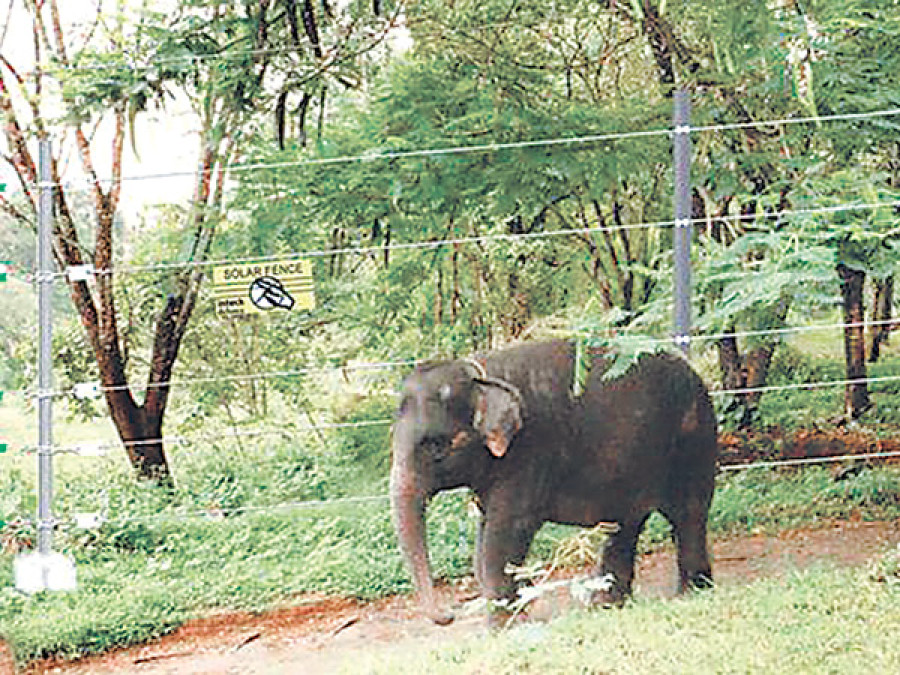National
Solar fencing: Nepali villages relieved, but more tusker terror on Indian side
The solar fencing erected last November from Jhiramale in Ilam district to Mechi River along the Nepal-India border has helped communities in Jhapa to keep the wild elephants at bay.
The solar fencing erected last November from Jhiramale in Ilam district to Mechi River along the Nepal-India border has helped communities in Jhapa to keep the wild elephants at bay. But it has not bode well for those living on the other side of the border, with Indian villages complaining about the rise in tusker terror in recent months.
The construction of the 17-km solar-powered offset fence along the border on the Nepal side has controlled the movement of herds of wild elephants or individual tuskers crossing into Nepal from India, reducing the instances the human-elephant conflict situation to a large extent, according to the forest authorities in Jhapa.
“No movement of wild tuskers from the Indian side into the villages in Nepal has been reported since the installation of the fence. This has significantly reduced the damage to crops and related human-elephant conflict during that period,” said Bodh Raj Subedi, district forest officer, Jhapa.
The human-elephant conflict in Jhapa has been reported for almost four decades. During the initial days, the number of elephants entering the villages in Nepal was reported to be around 30 and 40 individuals, but the number exceeded 120 in the areas, according to locals.
“The herds enter Bahundangi at late evening for grazing and go back across the border into India before early morning,” said Siddhartha Bajracharya, director at National Trust for Nature Conservation (NTNC), the implementing agency of the project. “They enter as tourists, go on rampage causing damage to houses, crops and even injure or kill people. It had been Nepal’s problem for almost four decades,
but it has now shifted to India,” he said.
The project on the community-based human-elephant conflict management in Jhapa, implemented by the District Forest Office, Jhapa aims to mitigate the human-elephant conflict in Bahundangi, Shantinagar, Budhabare and Sanichare villages where the increasing loss of lives, houses and crop damages are reported during harvesting seasons— June-July for maize and September-November for paddy—every year for over three decades.
Indian media reported last month that the West Bengal government raised serious objection over the erection of fence saying that it had blocked the natural movement of the elephants. The West Bengal government has written to the centre to raise this issue with the Nepal government.
However, Nepali authorities claim, the fencing was put to shield away the tuskers that wander through the settlement areas, but not to break the corridor movement along the forests. “The elephants went on rampage, destroying crops for nutritious food. We have not blocked the traditional route,” said Subedi.
He further said that the Nepali authorities will
discuss the transboundary issues with Indian counterparts to mitigate the problems related with human-elephant conflict.
More than 21 people lost their lives and 24 were injured in Jhapa in the last four years due to the conflict with elephants. The government has released Rs 7.5 million in the same period as compensation for the affected families from the elephant conflict.




 17.12°C Kathmandu
17.12°C Kathmandu












%20(1).jpg&w=300&height=200)

